WANDERING through hay meadows. See twisted hawthorn trunks and rusted metal gates hanging from stone stoops; fields swooping down towards an estuary and distant Lakeland fells. Smell hay and damp fields after rain, the rich aroma of cattle and clover. I haven???t been up here for years. It???s good to walk and revisit places you knew as a child . . .

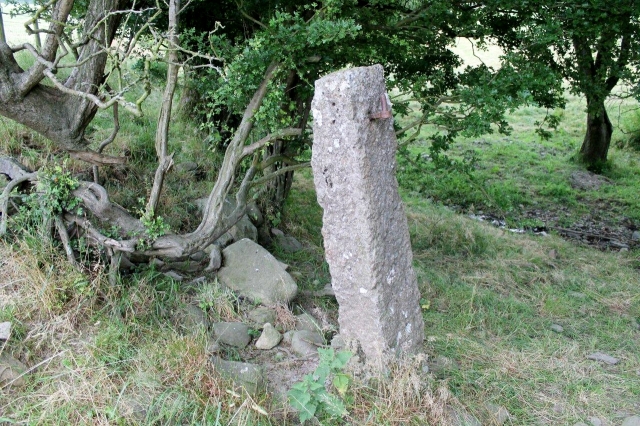 These strip-fields date back to Mediaeval times and are one of the few remaining examples of mediaeval agriculture in Cumbria. Fields like these were known as ???town fields??? and were worked on a community basis in the days before enclosure and the appropriation of land by the socially advantaged. In this corner of the world they were also known as ???dales??? ??? and that???s what I???ve known these fields as since childhood. The Dales.
These strip-fields date back to Mediaeval times and are one of the few remaining examples of mediaeval agriculture in Cumbria. Fields like these were known as ???town fields??? and were worked on a community basis in the days before enclosure and the appropriation of land by the socially advantaged. In this corner of the world they were also known as ???dales??? ??? and that???s what I???ve known these fields as since childhood. The Dales.

 The township they served in this instance was the village of Ireleth, the mediaeval kernel to which the 19th Century Askam-in-Furness is tied by the umbilical A595. ???Ireleth??? means Hill of the Irish. It was founded by Norse-Irish asylum seekers fleeing from unrest in Ireland during the 10th Century. (Click pictures for high-res images)
The township they served in this instance was the village of Ireleth, the mediaeval kernel to which the 19th Century Askam-in-Furness is tied by the umbilical A595. ???Ireleth??? means Hill of the Irish. It was founded by Norse-Irish asylum seekers fleeing from unrest in Ireland during the 10th Century. (Click pictures for high-res images)

 So we???re talking pretty ancient stuff here. We???re talking Norwegians mixed with Celts, settling on a hillside with a few Angles scattered about, in a land ruled by Welsh-speaking Britons to the north in Carlisle and Strathclyde. Add to that a sprinkling of Danes drifting in from the Dalelaw and you???ve got the foundations of England and the true English ??? at this point unblemished by a land-grabbing Norman aristocracy. Very diverse, very multi-cultural ??? ethnic minorities integrating and merging cultural identities and scraps of language to produce we fine, upstanding, charitable chaps who are famed the world over for welcoming the needy with open arms.
So we???re talking pretty ancient stuff here. We???re talking Norwegians mixed with Celts, settling on a hillside with a few Angles scattered about, in a land ruled by Welsh-speaking Britons to the north in Carlisle and Strathclyde. Add to that a sprinkling of Danes drifting in from the Dalelaw and you???ve got the foundations of England and the true English ??? at this point unblemished by a land-grabbing Norman aristocracy. Very diverse, very multi-cultural ??? ethnic minorities integrating and merging cultural identities and scraps of language to produce we fine, upstanding, charitable chaps who are famed the world over for welcoming the needy with open arms.
We???re heading for the woods, my granddaughter and me. The strip-fields are a bit of a diversion. It???s the woods we???ve come to see, really. But she???s not so sure she wants to go into the trees because some irresponsible adult has told her that wolves still roam this part of England. Actually, it might have been me.
It???s a grandparent???s duty to scare grandchildren with stories about wild animals ??? because they need to be kept on the straight and narrow for their own safety, and wild animals is the level they respond to. Just like it???s a parent???s duty to inflict maximum embarrassment on a child when he or she reaches adolescence ??? because embarrassment is one of the few things that has an effect when they???re mouthing off in the company of friends. Works every time. (“Dad, please don’t wear that rasta hat you bought in Ireland. No. Pleeeeeease . . . )
We walk for half an hour along overgrown lanes and across the Dales, then through a meadow where crusty cow-pats lurk in tufts of dark grass, arriving in the midday heat at the edge of the wood. As kids, we used to call it Bird???s Wood, because the farmer who owned it was called Harry Bird and we were all terrified of him. Its official name is Askam Wood.
 ???See this beck, this is where we used to catch fish,??? I tell her, and her eyes open wide. ???See this tree, this is where we used to have a camp. See this big stone, this is where the wolves gather at night when the moon is high and the owls are hooting. Hawooooooo . . . Don???t cry. The goblins will hear you.???
???See this beck, this is where we used to catch fish,??? I tell her, and her eyes open wide. ???See this tree, this is where we used to have a camp. See this big stone, this is where the wolves gather at night when the moon is high and the owls are hooting. Hawooooooo . . . Don???t cry. The goblins will hear you.???

 Some of the trees I used to climb haven???t changed in more than forty years. I still recognise the branches. Others, that have been coppiced at one time ??? probably before the 1960s ??? have matured into multi-trunked giants. Coppicing was popular in this part of Cumbria. A host of industries depended on woodlands ??? charcoal burning; bobbin production for the Lancashire mills; swill making; gunpowder manufacture. All gone.
Some of the trees I used to climb haven???t changed in more than forty years. I still recognise the branches. Others, that have been coppiced at one time ??? probably before the 1960s ??? have matured into multi-trunked giants. Coppicing was popular in this part of Cumbria. A host of industries depended on woodlands ??? charcoal burning; bobbin production for the Lancashire mills; swill making; gunpowder manufacture. All gone.
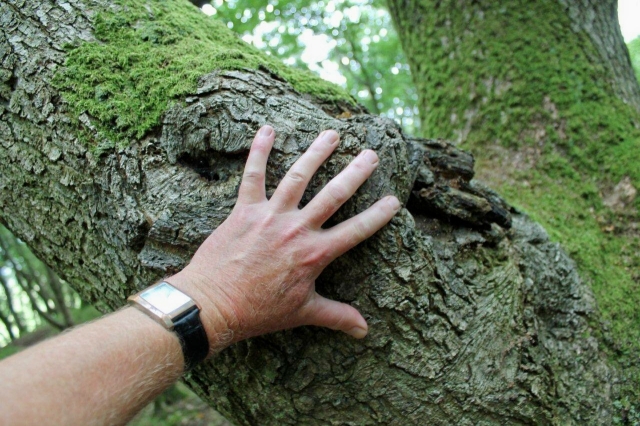
This tree used to have a branch that had looped back into the trunk. It was like one of those handles the less-agile have on the bathroom wall to pull themselves out of the bath. But over the years the trunk has expanded and drawn it inside. I find that fascinating. It???s like that tree that has a bicycle inside it. Do a Google search on ???tree with a bike in it??? and you???ll see what I mean
We walk for hours. At least it seems like hours. Through meadows full of bullocks and fields of mown hay. It???s all very Dennis Potter. Glad I???m wearing my short pants and tank-top.

 Re-crossing the Dales the granddaughter complains of fatigue and begs to be carried. Not even the threat of wolves will keep her moving. So I lift her up and place her on my shoulders. And it???s at this point I discover her little red wellies are caked in wet cow muck. It???s all over my shirt and hands.
Re-crossing the Dales the granddaughter complains of fatigue and begs to be carried. Not even the threat of wolves will keep her moving. So I lift her up and place her on my shoulders. And it???s at this point I discover her little red wellies are caked in wet cow muck. It???s all over my shirt and hands.
 Never mind the scents of hay and clover, or the aromatic drafts beneath woods of oak and hawthorn. There is nothing quite like the whiff of cow muck on warm skin that captures childhood so completely.
Never mind the scents of hay and clover, or the aromatic drafts beneath woods of oak and hawthorn. There is nothing quite like the whiff of cow muck on warm skin that captures childhood so completely.




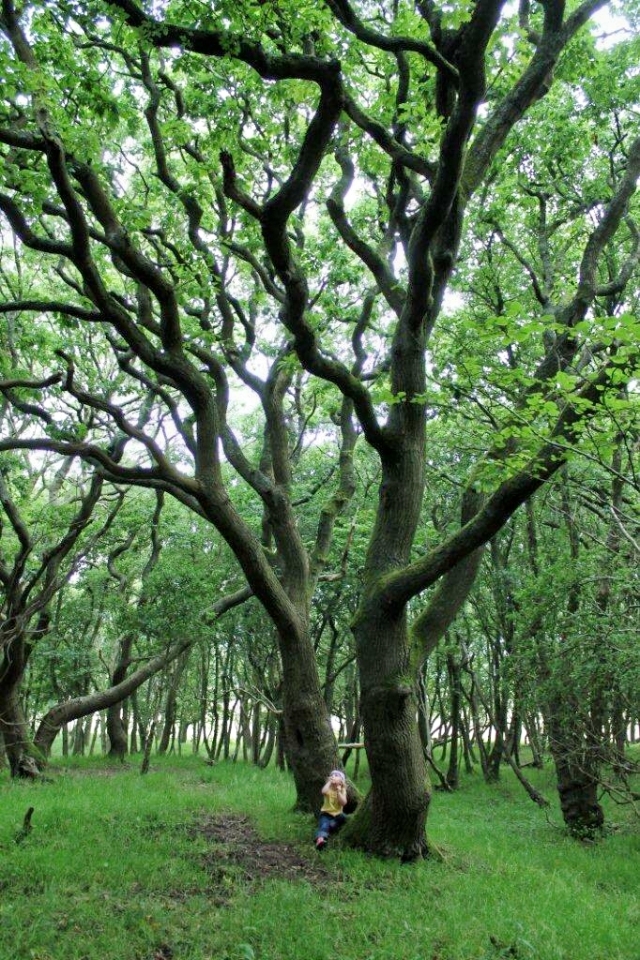
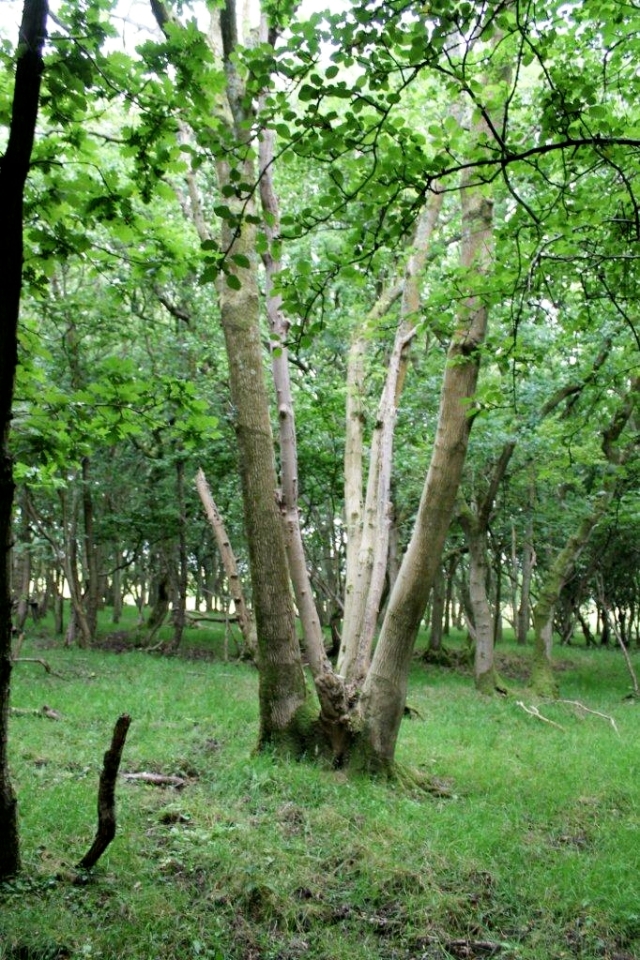


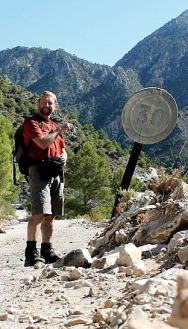



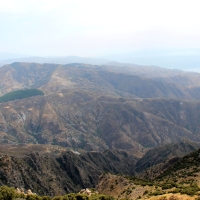



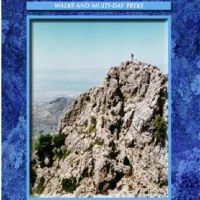

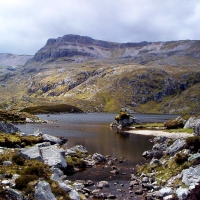






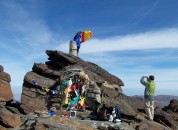




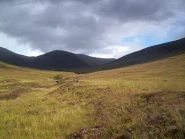




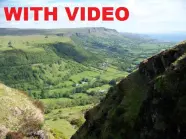

Evocative walk and I bet it provokes a few responses from other readers who remember similar woods and fields on the doorstep when they were kids. (They were called the ‘battlin fields’ where I lived, but not through any historical reference, more to do with the things we got up to.) I wonder if your granddaughter knew what she was doing when she asked to be carried! And I googled the bike tree. I won’t be leaning against any trees to read the map from now on.
LikeLike
Hi Chris. Battlin fields sounds a rough place. I wonder if the kids today get up to the same sort of things we did when we were younger. And I’m sure my granddaughter knew what she was up to because she laughed her head off.
The bike tree’s interesting because there appears to be a few of them. In fact, I didn’t find the one I was looking for, which I think is in the north of Cumbria or Northumberland. It was featured on the telly recently, and the bike had been left against the tree outside what had once been a blacksmith’s shop, about 90 years ago. Scientists X-rayed the tree, and sure enough the bike went right through the middle of it.
Cheers, Alen
LikeLike
It seems to be a nice excursion with your cute grandchild, Alen. I read with pleasure that you fulfill your obligations in terms of tall tales.
Droppings can be very sneaky. They can disguise themselves as a nice stepping stone when you come into the shade from the sunshine.
All the best,
Hanna
LikeLike
I’m a great believer in tall tales, Hanna. I have been known to insert one or two into my blog posts just to cheer myself up.
Droppings can be sneaky ??? and scary too. I one came across some in a forest in the Tatra mountains, in Poland, which I was sure had been left by a bear. I didn’t hang about to find out. Cows are one thing, bears are another!
Cheers, Alen
LikeLike
Waxing lyrical and beautifully so…….Resonates well with me as next week I am off down South to the village I was bought up in and where my Dad has lived for nigh on 40 years and my little brother has just moved back to. I will be walking in the Forewood RSPB reserve admiring the ancient Hornbeams and Oaks and visiting the 1000 year old Yew in the churchyard where my Mum is buried. I am looking forward to some nostalgia and gentle country walking. Hope you’ll visit http://www.comewalkwithmeuk.com in a week or two to view my update ????
LikeLike
Hi Howellsey. I’ll look forward to reading your blog. There are few things more noble than mighty trees, and oaks and hornbeams certainly fall into that bracket. Yews have a mystery about them as well, and a 1,000 year old one should be worth looking at. Hope you have a relaxing weekend.
Cheers, Alen
LikeLike
Hi Alen
Really loved that & I found it very interesting. Its not very often you can take your Grandchildren to the places you used to play as a kid, here’s hoping your Granddaughter can do the same to her children.
All the best
LikeLike
Hi Paul. Do you know, my grandfather used to take me around some of those places, in fact you can see his house on some of those pictures. So if my granddaughter takes her children round then that’ll be five generations. Thanks for putting that thought into my head. When she gets older I’ll suggest that she does it.
Cheers, Alen
LikeLike
Haha, great post! I did wonder about the cow pat situation! I remember falling splat into one when I was about two – traumatised for life. That is the way familiar landscapes always used to be remembered and passed down from grandparent to grandchild, with stories and associations, and who owns what. I remember doing the same with my grandparents. I googled the bike in the tree – unbelievable! Though the one I found is in the US somewhere.
LikeLike
Hi Jo. Yes, places and associations, being passed down and passed on. It’s what makes the world go round. The bikes in the tree seem to be mostly in the US, and I have tried in vain to locate the one I saw on the TV. No luck so far.
But on the same theme, our parish council had an old chestnut tree cut down recently because it had become unsafe, and the contractors blunted their chainsaw because there was a concrete fence post inside the trunk. The tree had grown around the post and swallowed it. Who knows what’s been eaten up by the nation’s tree?
Cheers, Alen
LikeLike
I loved this post. The pictures are gorgeous, but I can identify with taking a granddaughter to the same place you played as a child. I’m going to be doing that soon… it’s just a local city park, but it’s out of her neighborhood, and she’ll understand my stories about what we did.
LikeLike
Hi Jeanne. Good to hear from you. One of the many good aspects about doing things like that with a grandchild is that both parties benefit from it and enjoy it immensely. We’re expecting a grandson to be born any day now so no doubt I’ll be doing it all again in a couple of years.
Cheers, Alen
LikeLike
Didn’t know that about why Ireleth is called that. i visit the area quite a bit as both me and Richard love Broughton-in-Furness and, quite often, when it isn’t suitable weather for the high fells, we end up down that little peninsula.
I always think trees are one of the best photography subjects we have in Britain – those and lakes/tarns. They’re just so interesting – each one an individual!
Love your comment about land:
‘the appropriation of land by the socially advantaged’
That really hits the nail on the head. I own a bit of land (just one field of 6 acres) and just see it as an agreement between people. I wouldn’t dream of killing (or allowing to be killed) the wildlife on my land as, to me, it belongs to them quite as much as to me, if not more so. I don’t mind kids playing in it either (not that they do nowadays) as I used to beck-jump there as a kid. But so many who own land think they should exclude everyone and everything else! ????
I was just thinking the other day as I walked through the fields how I know exactly where cowpats (or cowclaps as we call them around here) are hiding because of the small patch of darker, ungrazed grass – I was wondering how many other people know what to look for?
Carol.
LikeLike
Hi Carol. I’d like a little field to mess about in and grow things. I’ve a double allotment plot, which is the next best thing, so I’m halfway there. There was a time when ordinary people had all sorts of rights and access to woodland, peat haggs, and land for growing crops ??? but we’ve been slowly edged out by powerful interests. I plan to start a one-man revolution to get it all back.
The secret of finding and judging the qualities of cowpats comes only with experience. Having spotted one lurking in the patch of dark grass, there’s a knack to deciding whether or not it’s an old dry one and can be stood on quite safely, or whether only the crust is dry and the inside has the texture of creme brulee. Not even the experts get it right every time!
Cheers, Alen
LikeLike
I don’t think I’d take the risk of treading on any cowclaps – no matter how dried up they look! ????
I’ll join you in your revolution!
LikeLike
Welcome comrade!
LikeLike
I hope you have seen the ‘Great lies to tell small kids’ book by Andy Riley?
LikeLike
Hi Mrs P. I’ve just had a look at it on Amazon and it’s hilarious. “There’s no such thing as kangaroos they’re just mice standing very near”. I shall purchase a copy forthwith.
Cheers, Alen
LikeLike
???? I rather liked the one that ran, “Wine makes Mummy clever”.
LikeLike
Yes, I saw that one and had a chuckle at it.
LikeLike
The bike in tree is pretty impressive. I have seen a MOD sign partly covered by a tree before in Deepdale woods but that’s about it. There is something about woods and trees that creates an atmosphere for telling stories about wild animals, mystical creatures and the like.
LikeLike
Hi David. I’ve seen a picture of a sign partly covered by a tree on Mike Knipe’s Northern Pies blog. Might have been the same sign. I find the subject fascinating. Like you say, trees are the things of fairy tales. All the bad guys, the wolves and witches and creatures of the night, live in the forest. And the good guys are the woodcutters rushing to the rescue at the end. From fairy tales to Robin Hood to Tolkien and CS Lewis, they have been places of terror and refuge and have fueled our imagination for thousands of years.
Cheers, Alen
LikeLike